Scaffolding is a temporary structure used to support people and material in the construction or repair of buildings and other large structures. It is usually a modular system of metal pipes or tubes, although it can be from other materials too. Everyone in the workplace has work health and safety duties. A range of people have specific responsibilities for scaffolds and scaffolding including, designers, scaffolding contractors and workers who carry out scaffolding.
Discussed below are a few do’s and don’ts that have to be followed while construction for safety.
The DO’s for Scaffolding Safety in Construction
Supervision under a competent person
No scaffold shall be erected, moved, dismantled, or altered except under the supervision of competent persons. A competent person is defined as one who is capable of identifying, existing, and predictable hazards in the surroundings or working conditions and who has the authorization to take prompt corrective action to eliminate them.
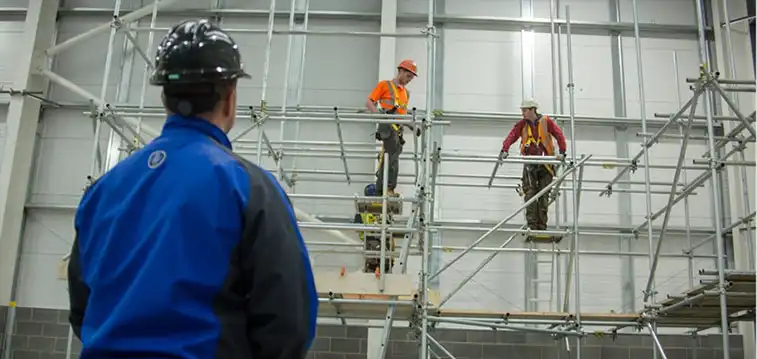
Safe usage of non-mobile welded frame scaffolding
The frame scaffold must be capable of supporting four times the maximum intended load. Using horizontal frame separation distance of seven feet, the maximum plank extension over the end support shall be no more than 12 inches, if guardrails are not used to block access to the area.

Overlap of wide frames
On a 10-section wide frame scaffold, the overlap for each plank on top of each other must be 12 inches. A scaffold five feet wide, 35 feet in length, and 30 feet high with frame spacing of seven feet must have horizontal securement every 20 feet and vertically-in every 20 feet.
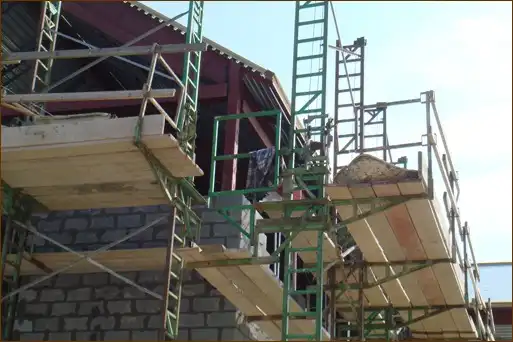
Scaffolding rails
Guardrails are required on welded frame scaffolds that are 10 feet high or more. Top rail shall be at least 36 inches to a maximum of 45 inches. The strength must be at least 200 pounds for welded frame scaffolds. Mid rail strength on a welded frame scaffold must be at least 150 pounds. Scaffold legs must bear on base plates and these shall rest on either firm foundation or mudsills.
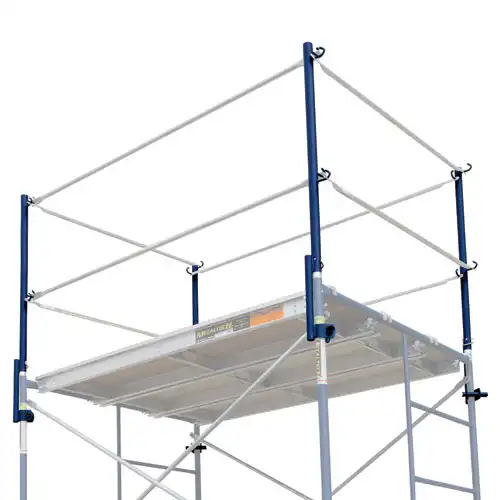
Scaffolding planks
The space between the scaffold planks must be no more than one inch. The maximum distance permitted between a plank and a frame upright is nine inches. An uncleated scaffold planks must extend over the end to support a minimum of six inches.

Scaffolding cross-bracing and pins
Cross bracing is acceptable in place of mid-rails when the ‘x’ is between 20 and 30 inches above the work surface. Cross bracing is acceptable in place of top rail when the ‘x’ is between 30 and 48 inches above the work surface. The purpose of using pins to lock a scaffold vertically together is to prevent uplift. This can occur with a rough terrain forklift grabbing a scaffold. Wind, climbing a scaffold or the use of a hoist can also cause it to lift up. The maximum intended load of a 10-inch wide, two-inch nominal thickness wood scaffold plank platform with the scaffold frames seven feet apart horizontally is approximately 175 pounds.

Other specifications
- Scaffold platforms above one section high must be provided with safe access.
- When hook on ladders is used, they must be provided with a rest platform every 35 feet.
- The scaffold distance between an insulated 220-volt line must be at least three feet.
- Work shall not be permitted during high winds. High winds are classified by the National Weather Service as 30 mph gusts or higher.
DON’Ts for Scaffolding Safety in Construction
Improper installation of guardrails
Falls are a major concern in scaffolding construction, these are attributed to the lack of guardrails, improper installation of guardrails and failure to use personal fall arrest systems when required. The OSHA standard requires fall protection must be used when work heights reach 10’ or more. OSHA’s standards represent the minimum level of protection; many general contractors require 100% fall protection at 6’ or greater when working on scaffolds. These contractors are increasing safety margins by exceeding the minimum requirements of the OSHA standards. Lack of proper access to the scaffold work platform is an additional reason for falls from scaffolds. Access in the form of a secured ladder, stair tower, ramp, etc. is required whenever there is 24” vertical change to an upper or lower level.
Non-stable Foundation stability
Collapse is another major concern. The amount of weight the scaffold will be required to hold including the weight of the scaffold itself, materials, and workers must be considered. Foundation stability, placement of scaffold planks, distance from the scaffold to the work surface, and tie-in requirements are just a few of the other items that must be considered prior to build a scaffold.
OSHA requires that this is done in one of two ways. The first is to install toe boards or netting on work platforms to prevent these items from falling to the ground or lower-level work areas. The other option is to erect barricades that physically prevent individuals from walking under work platforms.
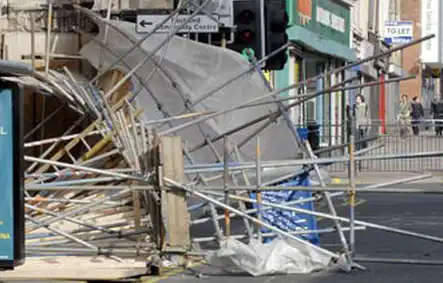
Platform railings misconstruction
Platform without railings is a grave concern in the construction industry. Railings are an important preventive measure to prevent falls. Failure to install all the required components such as baseplates, fittings, and fasteners. The progressively proper sequence of installation like pins, bracings, anchorings etc. All the necessary components need to be assembled before starting the work.
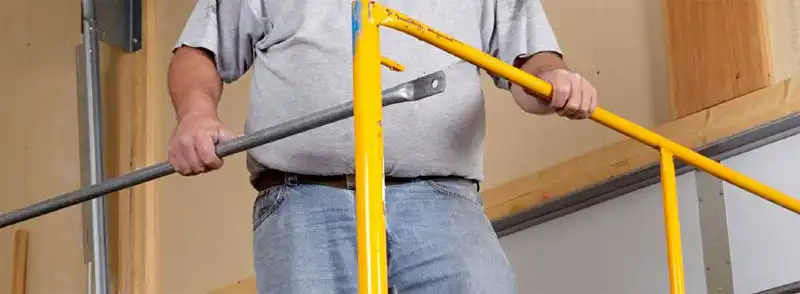
Tips on scaffolding safety
- Inspect and check after the erection daily while in use
- Begin with good footings
- Reject damaged parts
- Don’t short change bracing
- Tie scaffold to the building
- Don’t overload scaffolding
- Use metal catwalks, platforms
- Don’t climb on the brace
- Don’t ride moving scaffolding
- Protect working levels
Conclusion
Beyond having a qualified person overseeing the design, it’s important to closely exam the worksite to ensure that workers will be able to do their jobs safely during all phases of scaffolding assembly, use and disassembly. The best solution for a particular job will depend on factors such as the loads that will be present on work platforms, providing workers with safe access and fall protection, and the number of work levels.
Image Source: blackcatjsc.com.vn, chemey.com, larrysrentall.com, safesmartaccess.com.au, scaffold-equipment.com

